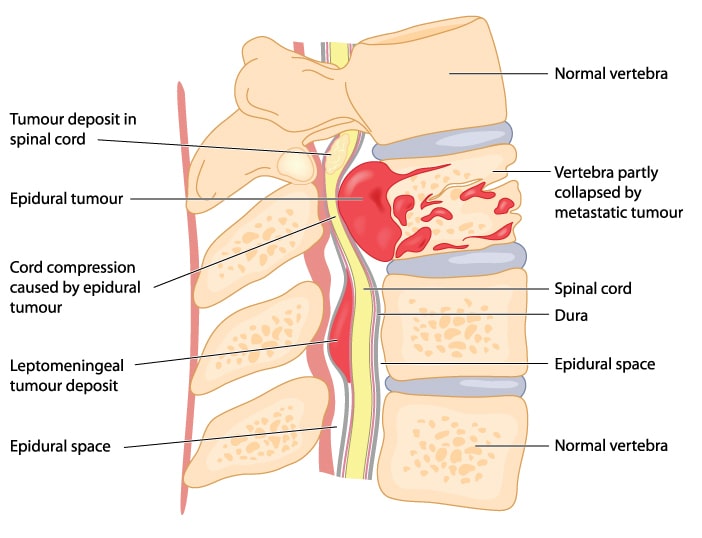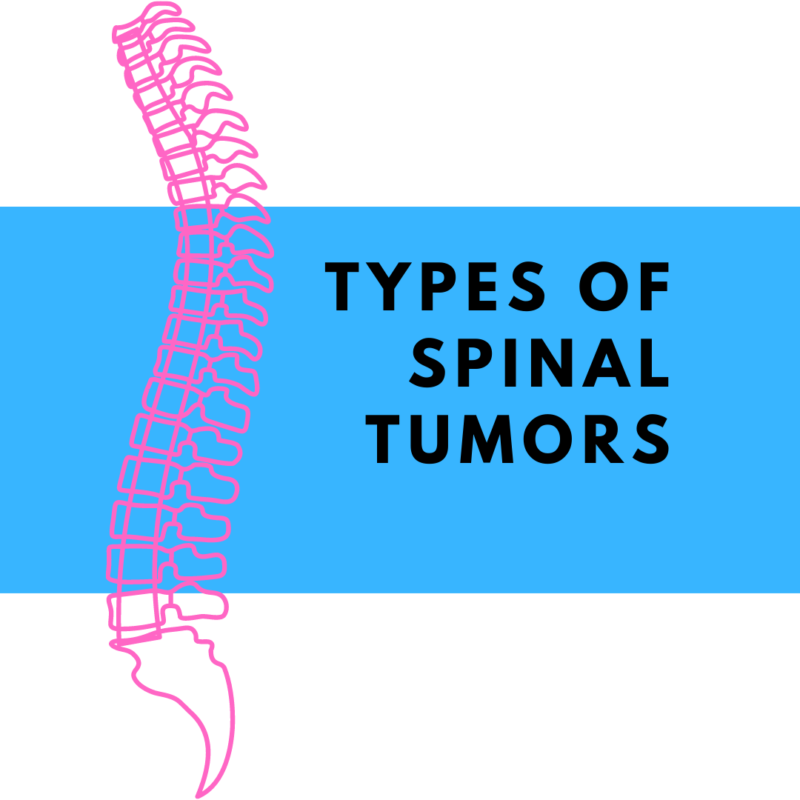Spinal tumors are rare. In fact, it is estimated by the National Institute of Neurological Disorders and Stroke that only about 10-15% of central nervous system tumors affect the spinal cord. This amounts to approximately 10,000 Americans being diagnosed with spinal cord tumors every year.
The exact cause of spinal tumors is unknown, however the majority of people affected by a spinal cord tumor generally have a history of other types of cancer. Lung, breast, prostate, thyroid, or kidney cancers are the most common cancers that can cause a secondary spinal cord tumor. For this reason, it is important for patients with a medical history of cancer to be aware of symptoms associated with a possible spinal tumor. Potential symptoms of a spinal cord tumor include:
- Back pain
- Numbness weakness
- Tingling
- Abnormal gait
- Loss of bowel or bladder function
- Paralysis to various degrees
- Scoliosis
- Pain at night
- Difficulty walking in the dark
- Loss of one’s position in space
As you may have noticed, the first few symptoms listed can be caused by a range of spinal cord conditions. For this reason, multiple tests may be needed in order to rule out other spinal cord conditions. In most cases spinal cord tumors, and other spinal conditions, can be diagnosed with an MRI, so most spinal specialists will perform an MRI during the diagnostic process.

There are two different types of spinal tumors that may be identified during an MRI. Primary spinal tumors are those that originate within the spinal column, generally occur in young people, and are usually benign (non-cancerous). Primary spinal tumors can include:
- Aneurysmal Bone Cyst (ABC): cysts that are located in the posterior region of the lumbar spine, usually in young women
- Giant Cell Tumor (GCT): tumor found in the sacrum and anterior regions of the spinal column, usually in middle-aged women
- Hemangioma: found in the thoracic or lumbar regions of the spine, usually in middle-aged women
- Osteoid Osteoma: located in the posterior area of the lumbar spine, usually in men between the ages of 20-40
- Osteoblastoma: similar to osteoid osteomas, however are larger and rarer
The other type of spinal cord tumor is a secondary spinal tumor. Secondary spinal tumors originate from cancer elsewhere in the body and then spread to the spine. This means that secondary spinal tumors are metastatic (cancerous). Unfortunately, around 90% of spinal tumors are metastatic. Secondary tumors can occur anywhere in the spine from the cervical spine all the way down to the sacrum, and can affect the spinal bones and/or spinal canal.
Once a spinal tumor is diagnosed, your spinal specialist will develop a treatment plan. Treatment plans for spinal tumors vary, depending on the type, location, and severity of the tumor. In some cases, you may require surgery to remove the tumor. In other cases, you may be referred to a spinal oncologist for further testing.










